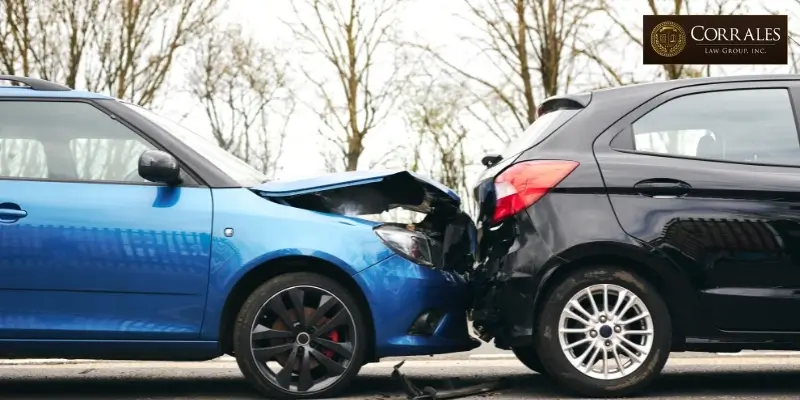|
|
Last Modified on Dec 14, 2024
Car accidents are an unfortunate part of life, and California, with its dense traffic and diverse driving conditions, sees more than its fair share. California car accident laws remain as important as ever to help drivers navigate the aftermath of a crash.
Understanding these laws, your rights, and the steps you should take after an accident is critical to protecting your property and your well-being. Whether you’re involved in a minor fender-bender or a serious collision, knowing how to handle the situation legally can make all the difference. Let’s break down the key California car accident laws and what they could mean for you.
How California’s Fault-Based System Affects Your Car Accident Claim
In California, the driver responsible for the car accident is typically held liable for damages. As a fault-based state, California allows the injured party to seek compensation from the at-fault driver’s insurance company.
This system empowers drivers who have been wronged in an accident, giving them a chance to recover medical expenses, lost wages, and property damage. Understanding how this system works and the evidence needed to prove fault is crucial for maximizing your chances of a successful claim.
The Role of Comparative Negligence in California Car Accidents
California follows the rule of comparative negligence, which means that even if you share some blame in a car accident, you can still recover damages; however, the amount you can recover will be reduced by your percentage of fault.
For example, if you are deemed 20% responsible for the accident, your award will be reduced by 20%. This makes it vital to work with an attorney who can help minimize your perceived liability and ensure you receive fair compensation.
The Statute of Limitations for Car Accident Claims in California: What You Need To Know
If you’ve been in a car accident in California, it’s essential to understand the statute of limitations that governs your ability to file a legal claim. In California, the statute of limitations for personal injury claims resulting from a car accident is typically two years from the date of the incident.
Missing this deadline can prevent you from pursuing compensation. To ensure your rights are protected, it’s critical to act quickly, seek legal counsel, and file a claim within the prescribed time frame.
Insurance Requirements in California: What Coverage You Need After a Car Accident
California law requires all drivers to have a minimum level of car insurance coverage. While the state mandates liability coverage to cover injury and property damage caused by your actions, the minimum requirements may not fully protect you in the event of a severe accident.
Understanding California’s insurance requirements and considering additional coverage options like uninsured motorist protection is essential for safeguarding yourself financially. Inadequate coverage can leave you vulnerable to high out-of-pocket costs following an accident.
What To Do After a Car Accident: Essential Steps To Protect Your Rights and Ensure Fair Compensation
Knowing what to do immediately after a car accident is key to protecting your rights and ensuring you receive the compensation you deserve. From calling emergency services to exchanging insurance information and documenting the scene, each step plays a significant role in building your case.
Having clear, organized evidence can strengthen your claim, whether you’re dealing with insurance companies or pursuing a legal claim. Taking quick, decisive action after an accident can prevent unnecessary complications and ensure that your legal rights are fully protected. Seeking legal advice early on can provide crucial guidance on how to navigate the process efficiently and avoid common mistakes that could harm your case.
FAQs
What Are the Rules for Injured Car Accidents in California?
In California, if you’re injured in a car accident, you must report the incident to your insurance company, seek medical attention, and document the injuries as soon as possible. California follows a comparative fault system, meaning that even if you are partially responsible for the accident, you may still be eligible to receive compensation for your injuries. It’s also important to file a claim with your insurance company.
How Is Fault Determined in a Car Accident in California?
Fault in a car accident in California is typically determined by analyzing evidence such as police reports, witness statements, photos of the scene, and traffic laws. California operates under a comparative negligence rule, which means that fault can be shared between multiple parties based on the circumstances of the accident. Insurance companies, and sometimes courts, use this information to assess each party’s degree of fault.
Is California a No-Fault Car Accident State?
California is not a no-fault car accident state. In California, the driver who is determined to be at fault for the accident is responsible for covering the damages, including the injured party’s medical bills, lost wages, and pain and suffering. Drivers are required to carry liability insurance, which pays for the damages caused by their negligence. If you are injured, you can file a claim with the at-fault driver’s insurance or your own insurance or take legal action.
What Is the Accident Policy in California?
In California, the accident policy typically refers to the requirements for insurance coverage following an accident. Drivers are required to carry a minimum amount of liability insurance to cover bodily injury and property damage caused to others in an accident. California law also requires drivers to exchange insurance information at the scene of the accident and report it to their insurance company within a reasonable time frame.
Schedule Your Car Accident Consultation Today
If you’ve been involved in a car accident, it’s critical to seek professional legal help to protect your rights. Our experienced attorneys at Corrales Law Group are here to guide you through the complexities of your case. We understand the stress and uncertainty that comes with an accident, and we can work tirelessly to ensure your rights are defended.
We can assist you in navigating the claims process and ensure you get the compensation you deserve. Our team can handle important aspects of your case, from dealing with insurance companies to representing you in court if necessary.
Don’t face the aftermath alone. Schedule your consultation today, and let us fight for a positive outcome for you. Our team is dedicated to securing justice for those involved in car accidents and ensuring they are fully compensated for their losses.




